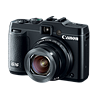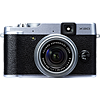Main
Model
Price
Advantages
launch
Announced
Body type
Camera subcategory
Sensor
Effective pixels
Max resolution
Sensor size
Sensor type
Processor
Image ratio w:h
Other resolutions
Sensor photo detectors
Image
ISO
White balance presets
Custom white balance
Image stabilization
Uncompressed format
JPEG quality levels
Photography features
Minimum shutter speed
Maximum shutter speed
Aperture priority
Shutter priority
Manual exposure mode
Subject / scene modes
Built-in flash
Flash range
External flash
Flash modes
Continuous drive
Self-timer
Metering modes
Exposure compensation
AE Bracketing
WB Bracketing
Screen / viewfinder
Articulated LCD
Screen size
Screen dots
Touch screen
Screen type
Live view
Viewfinder type
Viewfinder coverage
Videography features
Resolutions
File Format
Videography notes
Microphone
Speaker
Optics & Focus
Focal length (equiv.)
Optical zoom
Maximum aperture
Autofocus
Digital zoom
Manual focus
Macro focus range
Number of focus points
Normal focus range
Focal length multiplier
Physical
Weight (inc. batteries)
Dimensions
Environmentally sealed
Battery
Battery details
Battery Life (CIPA)
Storage
Storage types
Connectivity
USB
HDMI
Wireless
Wireless notes
Remote control
Other features
Orientation sensor
Timelapse recording
GPS
GPS notes
Samples
Videos
Summary
The X20 is produced with bigger sensor compared to the PowerShot G16: 2/3' (8.8 x 6.6 mm) versus 1/1.7' (7.44 x 5.58 mm). This is very important difference between these cameras because large sensor lets the photographer to produce pictures of the more professional quality. The PowerShot G16 offers more powerful 4x digital and 5x optical zooms.
The PowerShot G16 screen is better as it has more screen dots 922,000 in compare to 460,000 dots of the X20 display. The higher dot count screen is better for reviewing images on your camera. The X20 provides better slowest (30 seconds) and highest (1/4000 second) shutter speeds.
The PowerShot G16 battery life is better than the X20 battery life. In accordance with CIPA standards the camera owner will be able to make 360 photos with the PowerShot G16 and only 270 with the X20. The Fujifilm X20 weighs 353g which is 3g lighter in comparison with the weight of the PowerShot G16. The PowerShot G16 can utilize optional accessory GPS devices. This feature can be convenient if you like to travel, to be able to check the picture metadata and find out exactly where an image was produced.
The PowerShot G16 has 8 advantages and the X20 only 3 so the PowerShot G16 will be the best buy. Check the lowest price on Amazon.


